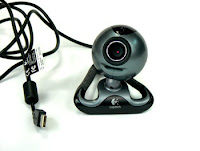Booting or loading an operating system is different than installing it, which is generally an initial one-time activity. (Those who buy a computer with an operating system already installed don't have to worry about that.) When you install the operating system, you may be asked to identify certain options or configuration choices. At the end of installation, your operating system is on your hard disk ready to be booted (loaded) into random access memory, the computer storage that is closer to the microprocessor and faster to work with than the hard disk.
Typically, when an operating system is installed, it is set up so that when you turn the computer on, the system is automatically booted as well. If you run out of storage (memory) or the operating system or an application program encounters an error, you may get an error message or your screen may "freeze" (you can't do anything). In these events, you may have to reboot the operating system.
How Booting Works
(Note: This procedure may differ slightly for Mac, UNIX, OS/2, or other operating systems.)
When you turn on your computer, chances are that the operating system has been set up to boot (load into RAM) automatically in this sequence:
- As soon as the computer is turned on, the basic input-output system (BIOS) on your system's read-only memory (ROM) chip is "woken up" and takes charge. BIOS is already loaded because it's built-in to the ROM chip and, unlike random access memory (RAM), ROM contents don't get erased when the computer is turned off.
- BIOS first does a power-on self test (POST) to make sure all the computer's components are operational. Then the BIOS's boot program looks for the special boot programs that will actually load the operating system onto the hard disk.
- First, it looks on drive A (unless you've set it up some other way or there is no diskette drive) at a specific place where operating system boot files are located. If there is a diskette in drive A but it's not a system disk, BIOS will send you a message that drive A doesn't contain a system disk. If there is no diskette in drive A (which is the most common case), BIOS looks for the system files at a specific place on your hard drive.
- Having identified the drive where boot files are located, BIOS next looks at the first sector (a 512-byte area) and copies information from it into specific locations in RAM. This information is known as the boot record or Master Boot Record.
- It then loads the boot record into a specific place (hexadecimal address 7C00) in RAM.
- The boot record contains a program that BIOS now branches to, giving the boot record control of the computer.
- The boot record loads the initial system file (for example, for DOS systems, IO.SYS) into RAM from the diskette or hard disk.
- The initial file (for example, IO.SYS, which includes a program called SYSINIT) then loads the rest of the operating system into RAM. (At this point, the boot record is no longer needed and can be overlaid by other data.)
- The initial file (for example, SYSINIT) loads a system file (for example, MSDOS.SYS) that knows how to work with the BIOS.
- One of the first operating system files that is loaded is a system configuration file (for DOS, it's called CONFIG.SYS). Information in the configuration file tells the loading program which specific operating system files need to be loaded (for example, specific device driver.
- Another special file that is loaded is one that tells which specific applications or commands the user wants to have included or performed as part of the boot process. In DOS, this file is named AUTOEXEC.BAT. In Windows, it's called WIN.INI.
- After all operating system files have been loaded, the operating system is given control of the computer and performs requested initial commands and then waits for the first interactive user input.






